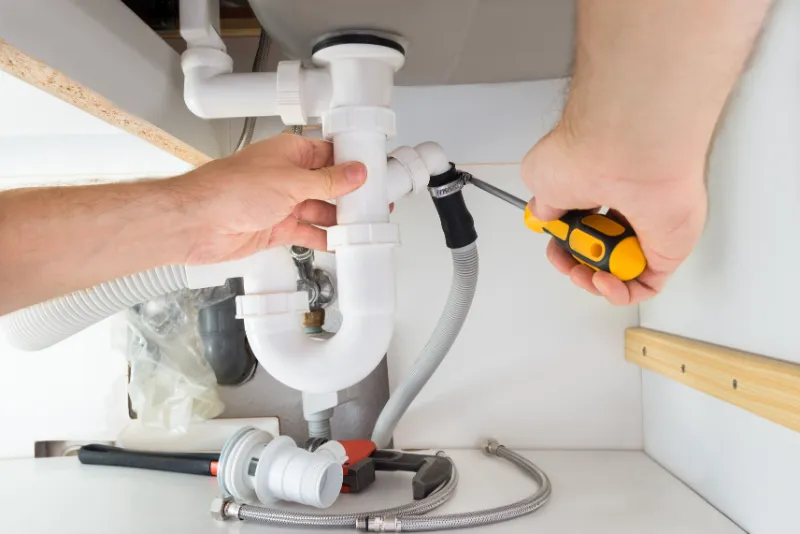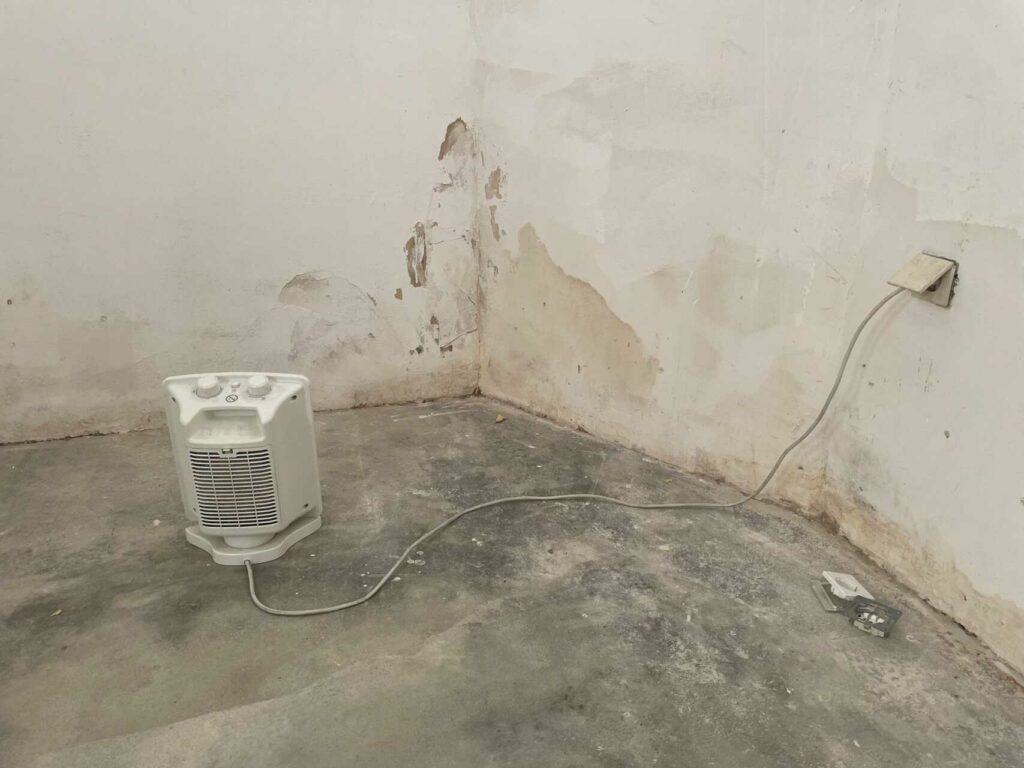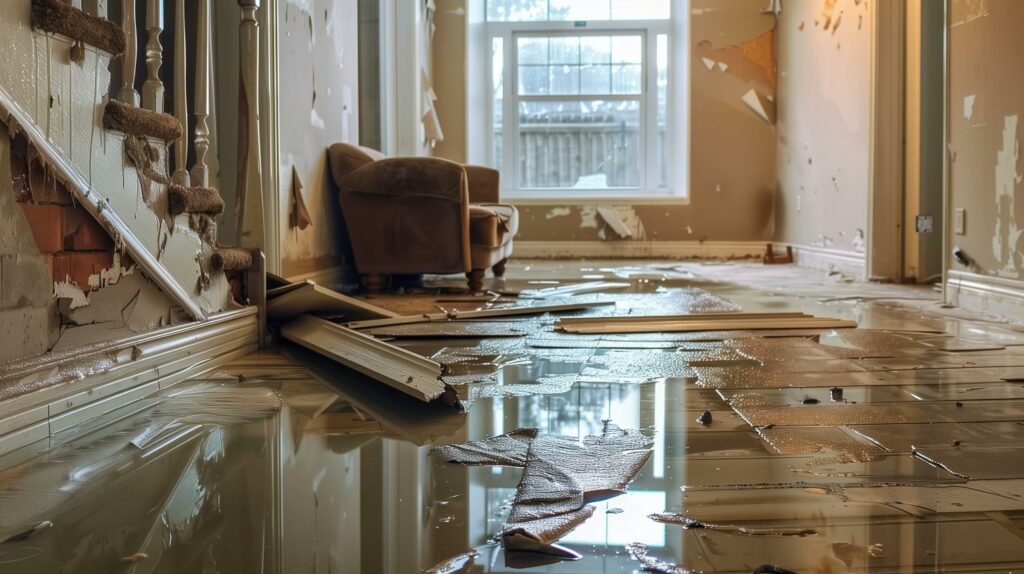Contents
Do you ever wonder why plumbers use purple primer on PVC pipes?
Well, the answer lies in its purpose, which is to ensure a secure connection. By using purple primer, plumbers can prevent leaks and ensure the long-term durability of the pipes.
In this article, we will explore the importance of purple primer and provide you with the steps for proper application.
So, if you’re interested in learning more about this essential plumbing tool, keep reading!
Key Takeaways
- Purple primer ensures a proper bond between PVC pipes and fittings.
- Purple primer removes dirt, grease, and debris from the pipes and fittings, creating clean and contaminant-free surfaces for effective bonding.
- Purple primer softens the surface of the PVC pipes and fittings, enhancing adhesion and creating a strong bond for a leak-free joint.
- Purple primer improves the overall performance and durability of PVC connections, ensuring the longevity of the plumbing system.
The Purpose of Purple Primer
The purpose of purple primer in PVC plumbing is to ensure a proper bond between the pipes and fittings. When you’re working on a plumbing project, it’s important to have a strong and secure connection between the different components. This is where the purple primer comes in. It acts as a preparatory agent, helping to clean and prime the surface of the PVC pipes and fittings before they’re joined together.
The purple primer contains solvents that help to remove any dirt, grease, or debris that may be present on the surface of the pipes and fittings. By doing so, it ensures that the surfaces are clean and free from any contaminants, which could hinder the effectiveness of the bond. This is especially important in plumbing, where leaks or weak connections can cause serious damage and inconvenience to homeowners.
The primer also serves another crucial purpose – it softens the surface of the PVC pipes and fittings. This softening effect allows the adhesive or cement to penetrate the surface, creating a stronger and more secure bond. It essentially acts as a bridge between the pipes and fittings, ensuring that they’re tightly and securely joined together.
How Purple Primer Ensures a Secure Connection
To ensure a secure connection between PVC pipes and fittings, plumbers rely on the use of purple primer. Purple primer is a crucial component in the plumbing process as it helps to create a strong bond between the pipes and fittings, ensuring a leak-free and long-lasting connection.
When applying purple primer, plumbers follow a specific procedure to ensure its effectiveness. First, they clean the surface of both the pipe and fitting using a clean cloth or brush to remove any dirt, dust, or debris. This step is vital as it allows the primer to adhere properly to the PVC material.
Next, plumbers apply the purple primer to the outside of the pipe and the inside of the fitting. The primer softens the PVC surface, making it more receptive to the adhesive properties of the solvent cement. This softening process is essential as it allows the solvent cement to penetrate the PVC material, creating a strong chemical bond.
Once the primer has been applied, plumbers then apply the solvent cement to both the pipe and fitting. The solvent cement works by chemically bonding the PVC components together, creating a secure and durable connection. The primer acts as a catalyst, enhancing the effectiveness of the solvent cement and ensuring a strong bond.
After applying the solvent cement, plumbers quickly insert the pipe into the fitting, ensuring a tight fit. They hold the joint firmly in place for a few seconds, allowing the solvent cement to set and create a solid connection. The result is a secure joint that’s resistant to leaks, even under high pressure.
The Role of Purple Primer in Leak Prevention
Using purple primer on PVC is essential for preventing leaks in plumbing systems.
When applied correctly, purple primer acts as a crucial step in ensuring a tight and secure connection between PVC pipes and fittings. Here’s why purple primer plays such a vital role in leak prevention:
- Surface preparation: Purple primer acts as a solvent that cleans and prepares the surface of the PVC pipe and fittings. By removing dirt, grease, and other contaminants, it creates a clean and smooth surface for the adhesive to bond effectively.
- Chemical activation: Purple primer contains chemicals that soften the PVC material, allowing the adhesive to penetrate and bond more effectively. This chemical activation enhances the overall strength and durability of the connection, minimizing the risk of leaks.
- Enhanced adhesion: The purple primer not only cleans and softens the PVC surface but also helps the adhesive bond more securely. The primer creates a roughened surface that allows the adhesive to adhere tightly, forming a strong and watertight seal.
- Seal integrity: The combination of the purple primer and adhesive creates a complete and reliable seal. This seal is essential for preventing leaks in plumbing systems, as it ensures that no water or other fluids can escape through the connection points.
The Importance of Purple Primer for Long-Term Durability
To ensure long-term durability of PVC plumbing systems, it is crucial for you as a plumber to recognize the importance of purple primer. Purple primer is a key component in creating a strong and reliable bond between PVC pipes and fittings. By properly using purple primer, you can ensure that your plumbing installations will withstand the test of time and minimize the risk of leaks or failures.
Purple primer acts as a cleaning and priming agent for PVC pipes and fittings. It prepares the surface by removing dirt, grease, and other contaminants that could interfere with the adhesion of the solvent cement. It also softens the PVC surface, allowing the solvent cement to penetrate and create a strong bond. This bond is essential for preventing leaks and ensuring the long-term durability of the plumbing system.
To further illustrate the importance of purple primer, let’s take a look at the following table:
| Benefits of Purple Primer | Reasons |
|---|---|
| Ensures Strong Bond | Purple primer helps create a secure and reliable connection between PVC pipes and fittings. This prevents leaks and failures. |
| Provides Enhanced Adhesion | The primer softens the PVC surface, allowing the solvent cement to penetrate and bond effectively. This enhances the overall strength and durability of the plumbing system. |
| Increases Longevity | By using purple primer, you are taking proactive steps to ensure that your plumbing installations will last for many years without any issues. |
| Minimizes Risk of Leaks | The proper use of purple primer significantly reduces the chances of leaks, preventing water damage and potential costly repairs. |
| Complies with Industry Standards | Purple primer is recommended by industry standards, ensuring that your plumbing work meets the highest quality and safety requirements. |
As you can see, purple primer plays a crucial role in the long-term durability and reliability of PVC plumbing systems. By recognizing its importance and using it correctly, you can serve your customers with confidence and provide them with plumbing installations that will stand the test of time.
Steps for Proper Application of Purple Primer
To properly apply purple primer to PVC pipes and fittings, follow these steps for a strong and reliable bond:
- Prepare the surfaces: Before applying the primer, make sure the surfaces of the PVC pipes and fittings are clean and dry. Use a clean cloth or brush to remove any dirt, grease, or debris that may be present. This will ensure a smooth and even application of the primer.
- Apply the primer: Shake the purple primer bottle well to mix the contents. Then, using a brush or applicator, apply a thin and even coat of primer to the outside of the pipe and the inside of the fitting. Be sure to cover the entire surface that will be joined together.
- Allow the primer to dry: After applying the primer, let it dry completely. The drying time may vary depending on the weather conditions, but it usually takes around 10-15 minutes. It’s important to wait until the primer is dry before proceeding to the next step.
- Apply the solvent cement: Once the primer is dry, it’s time to apply the solvent cement. Using a clean brush or applicator, apply a thin and even layer of solvent cement to the primed surfaces. Make sure to apply the cement to both the pipe and the fitting.
Conclusion
In conclusion, purple primer is an essential tool for plumbers when working with PVC pipes. Its purpose is to ensure a secure connection and prevent leaks, ultimately contributing to the long-term durability of the plumbing system.
By following the proper application steps, plumbers can confidently rely on purple primer to create strong and reliable connections.
You may also like: Can you have too much slope in drain pipe?




